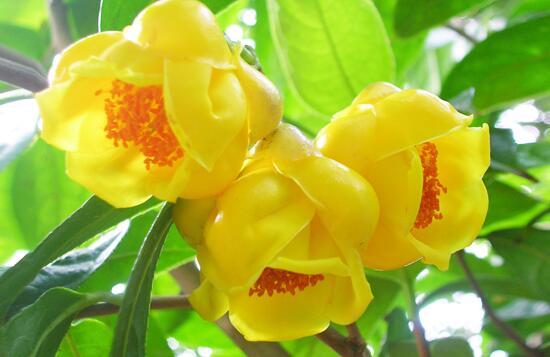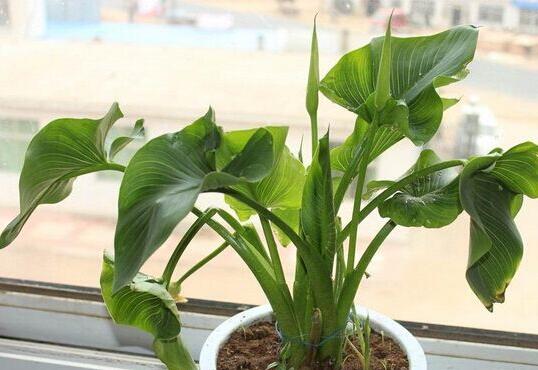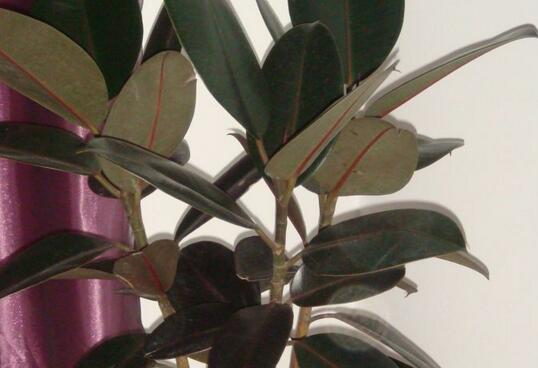How to propagate golden scented tea, two propagation methods of golden scented tea (cutting / sowing)
Golden scented tea, also known as yellow camellia, as its name, it has a golden color, crystal clear, looks very beautiful. Because of the beauty of golden scented tea, but also because of its strong efficacy, it is multiplied in large numbers, so how to reproduce golden scented tea? According to the editor's inquiry, there are two common breeding methods of golden scented tea, one is cutting, the other is sowing, let's go and have a look.
How to propagate, cuttage / sow golden scented tea

As a novice, it is OK to master the breeding method of golden scented tea, but if you are an old hand, it is necessary to understand the breeding method of golden scented tea, because only in this way can it be fun to raise. As for how to reproduce golden scented tea, there are two main methods: cutting propagation and sowing reproduction, how to operate, we continue to look down.
II. Two propagation methods of golden scented tea (1) Cuttage propagation of golden scented tea
As a precious plant, golden scented tea has a wide variety, but no matter what variety it is, it can be propagated by cuttings, and it is also used by the majority of flower friends. As for how to operate, the details are as follows:
1. Cutting time
The cuttage propagation of Camellia oleifera is generally carried out in spring (early April-May) or autumn (mid-late September), which is the rapid growth period, strong activity and high cutting survival rate.
2. Cuttings selection
In the cutting method of golden scented tea, the most important thing is good cutting. if it is selected, the whole success rate of cutting will be very high. We can choose the semi-mature branches of the current year with full external tissue of the crown, complete leaves, full leaf buds and no diseases and insect pests as cuttings.
Cuttings treatment: cut off the top buds of the selected branches, then cut each section into branches 8-10 cm long, leave a few leaves on the branches, and cut them into a horseshoe-shaped oblique at the base.
3. Cuttage starts
Insert the treated cuttings into a silica basin with a depth of 1 stroke 3 of the branches, and then press the sand and gravel by hand.
4. Maintenance after insertion
After the implementation of the cutting, it should be fully watered, and it should be transplanted to a more ventilated place, avoid direct sunlight, and control the temperature at about 25 ℃, so it will be easier to survive. One month later, after the new roots grew, the sunlight was gradually increased and the Lignification of tea seedlings was accelerated.
(2) sowing and propagation of golden scented tea
Golden scented tea will bear fruit after it blossoms, and the fruit will mature and crack in late October. After the seeds are ripe, there is no post-ripening dormancy period, the harvested fruit is placed in an indoor ventilated place to dry in the shade, and the seeds are sown immediately after the capsule is cracked and taken out. If the seeds cannot be sown in autumn, the seeds should be stored in wet sand for spring sowing in February of the following year.
Generally speaking, whether it is cutting propagation or sowing propagation, golden scented tea can survive. If you have a pot of golden scented tea around you, and you happen to want to raise another pot, you might as well try it yourself. With regard to the breeding method of golden scented tea, the editor has introduced it here, hoping to bring help to everyone.
The propagation method of golden scented tea can be propagated by grafting, cuttage, striping and tissue culture. The seeds can be sowed after maturity, and the seedlings can only blossom for about 7-8 years. The cuttings are mostly carried out in spring, the grafting is better in autumn, and the striping can be carried out in its development period. The main results are as follows: 1. In the dry season from May to June, the young mother tree is selected, the one-year-old shoots are cut from the top, the 10cm is about long, the lower leaves are removed, the lower leaves are flattened with a blade at the bottom of the node, one lateral bud is preserved at the top, and the leaves are cut into the medium of river sand or gravel. After insertion, cover up the grass curtain to shade, enhance the foliar spray, adhere to the air humidity of the bed, and promote rooting. In order to improve the survival rate of cuttings, cuttings can be soaked in 50~100ppm 's ABT rooting powder solution for 8 hours and 12 hours. 2. Grafting selects strong seedlings or camellia species that can easily survive by cutting as rootstocks, truncated at the ground diameter 4~5cm, split through the pith about 1.5cm deep, use 1-2-year-old branches as scions, the upper part of the scion preserves 1-2 leaves, the lower part is cut into a wedge, and pierced into the split of the rootstock, the constituent layers on both sides should be closely joined, and then tied tightly with plastic belt. After grafting, cover the scion with a plastic bag and tie it with a belt below, but not too tight, so as to form water droplets in the bag and drop on the rootstock from time to time. Add a packing paper bag to the outside of the plastic bag to cover the direct sunlight. 3. Take each bud node as a segment, save a leaf, about 1.5cm, cut the lower part oblique, and then stab it into the medium, the depth is to cover the branches. This method can make full use of branches and is suitable for many reproductive needs. 4, camellia development is slow, unsuitable intensity pruning; crown development is average, also do not need special pruning, only need to cut off disease and insect branches, too dense branches, weak branches and only long branches. Newly planted seedlings can also be moderately trimmed in order to ensure survival. Bud picking is a main part of cultivation and management. generally, each branch can keep up to 3 buds, and insist on a certain spacing, such as permission to reduce plant nutrition consumption is too large, affecting flowering. Camellia blossoms for up to half a year, real-time to get rid of wilted flowers, reduce nutrition consumption, strengthen the tree potential is of great benefit. The Propagation Technology of Golden scented Tea
Golden scented tea has a special color genetic gene DNA, and its reproduction is difficult to replicate. The use of high and new technology to solve the rapid propagation of a variety of fine seed and seedling survival genes, to overcome the difficult problem of low survival, today to introduce the breeding technology of golden tea.
Propagation techniques of Golden scented Tea:
Sowing and propagation: Camellia chinensis fruits generally mature in the first and middle of October and crack in late October, and there is no post-ripening dormancy period after seed maturity. It is appropriate for seed propagation to be sowed in autumn. In the first and middle of October, the harvested fruit should be placed in an indoor ventilated place to dry, and the seeds should be sown immediately after the capsule is cracked and taken out. If you fail to sow in autumn, the seeds should be stored in wet sand for spring sowing in February of the vertical year.
Cutting propagation: the suitable period for cuttage propagation of Camellia sinensis is from April to early May, and it can also be carried out in the middle and late September. The cuttings selected the semi-mature branches of the current year with abundant external tissue of the crown, intact leaves, full leaf buds and no diseases and insect pests. The ear is generally 15 cm long, with 2 leaves at the apex and a heel at the base. After the branches were treated with IBA 300ppm for 5 hours, the cuttings were cut on the seedling bed according to the row spacing of 10 cm × 3 cm, and the depth of cuttings was about 3 cm. The key to the survival of tea seedling cuttings is to maintain enough humidity in the early stage of raising seedlings, avoid direct sunlight, and control the temperature at about 25 ℃. Spray water frequently, so that the seedlings are often covered with a thin water film. One month later, after the new roots grew, the sunlight was gradually increased and the Lignification of tea seedlings was accelerated.
Grafting propagation: Golden scented tea grafting propagation is divided into bud seedling rootstock grafting and semi-mature branch grafting. Bud seedlings were grafted with rootstock. Common single camellia and Camellia oleifera can be used as rootstocks. First sow the rootstock seeds on the sand bed, and when the seedlings grow to 4-5 cm, they can be grafted. Before grafting, dig the buds of rootstock, remove the sand, cut the root tip 1-1.5 cm above the cotyledons, and cut off the root tip so that the total length is 6-7 cm; select well-growing semi-lignified branches as scions, cut them into wedges and put them into wet towels to moisturize. When grafting, split the stem longitudinally with the cotyledon suture, the depth is the same as the slope cut by the scion, quickly insert the chopped scion into the split of the rootstock, aim at the cambium on one side of the rootstock, and fasten it with plastic film tape. Then the grafted seedlings were planted in the fertile and loose sandy soil seedbed according to the row spacing of 8 × 2 cm. After planting, a shed was set up in the seedling bed to keep warm with plastic film. Generally, the grafted seedling interface begins to heal in 10-15 days, and the film can be opened at night about 20-25 days. After that, the ventilation was gradually strengthened and the light was increased. After the new buds germinated, all the films were removed.
The breeding technology of golden scented tea is introduced here, and the discovery of golden scented tea fills the gap that there are no golden flowers in the tea family.
- Prev

How to raise sea taro flowers, culture methods and matters needing attention / shading
Sea taro is a world-famous flower plant, which has high ornamental value. It is cultivated in many parts of our country, but if we want to raise it well, there are many places that need to be paid attention to. About how to grow sea taro flowers? What are the culture methods and matters needing attention of sea taro flowers? Next, the editor will take you to learn about it.
- Next

How to reproduce rubber trees, how to cut rubber tree leaves / soil / water cutting can be
Rubber tree is a kind of evergreen tree, its reproduction mode is special compared with other plants, for example, in common cutting propagation, both cuttings and single buds can be used, and there are many choices for water and soil cutting.
Related
- Fuxing push coffee new agricultural production and marketing class: lack of small-scale processing plants
- Jujube rice field leisure farm deep ploughing Yilan for five years to create a space for organic food and play
- Nongyu Farm-A trial of organic papaya for brave women with advanced technology
- Four points for attention in the prevention and control of diseases and insect pests of edible fungi
- How to add nutrient solution to Edible Fungi
- Is there any good way to control edible fungus mites?
- Open Inoculation Technology of Edible Fungi
- Is there any clever way to use fertilizer for edible fungus in winter?
- What agents are used to kill the pathogens of edible fungi in the mushroom shed?
- Rapid drying of Edible Fungi

